Using Decision Map - Retargeting Pixel
Retargeting is a highly effective e-commerce marketing strategy that turns window shoppers into paying customers by serving specific personalised ads to those who have previously visited your website pages. Retargeting pixels enable advertisers to collect first party data from their own sites so they can create personalized, dynamic creatives based on a user's direct action. For example, if the user browses specific cars, the ads then feature the cars previously viewed, in order to make the messaging more relevant. |
Let's set up a campaign using retargeting pixels. Here, we'll create a campaign with the strategy described below.
MeowWoofShack, a retail pet-care brand, would like to use Jivox’s personalization capabilities to setup a retargeting campaign. The campaign would target pet owner audiences who visit their website by tracking the products they viewed on different pages. The campaign would involve personalized product images and product prices that would be shown to different audiences. Multiple personalized creatives will be served to the audiences based on their last viewed products. |
Personalization Data Triggers used
Retargeting Pixels - Jivox Pixel 1
Data Signal - Sequential and Retargeting
Dynamic Assets of the Ad
The ads would personalize the background image, copy, product image and product price.
Creative Master Design
The Ad consists of two frames as shown in the image below. The background image, product image, copy and product price are personalized for the selected audience segments.

Below is the Mapping Document that defines the strategy for this campaign. As you can see, the Mapping Document specifies the Reporting Name, Product Image, Product Price, Product ID and other assets against each Product Category.
You can download the mapping document from the Resources section.

Using the information in the Mapping Document and Jivox's Dynamic Canvas Studio, the different creative variations have already been generated. If you haven't done this yet, use the Creative Master and Assets provided in the Resources section and follow the steps detailed in the Creating a Display Ad section. |
For this campaign, here's what the Asset Source looks like. As you can see, the Creative Name in the Asset Source is exactly same as the Product ID specified in the Mapping Document.
You can download the Asset Source from the Resources section below.

Let's begin!
Generating Retargeting Pixels
First, we will create the Jivox Retargeting Pixel using the Creating Retargeting Pixels tab. On the platform, select Retargeting Pixels from the left pane.

Here, we'll create the Jivox retargeting pixel.
On the Create Retargeting Pixels tab, let's enter the following details:
- From the Retargeting Group drop-down, select group1.
- Select Add from Action drop-down.
- Enter 90 in the Expire After in Day(s) field.
- Enter 1 for Max Values. This determines the number of values to be stored in the pixel.
- In the Page Macro/Variable field, enter {Product_ID}.
- Enter the pixel name Jivox Pixel for Alias.
- Enter a description.
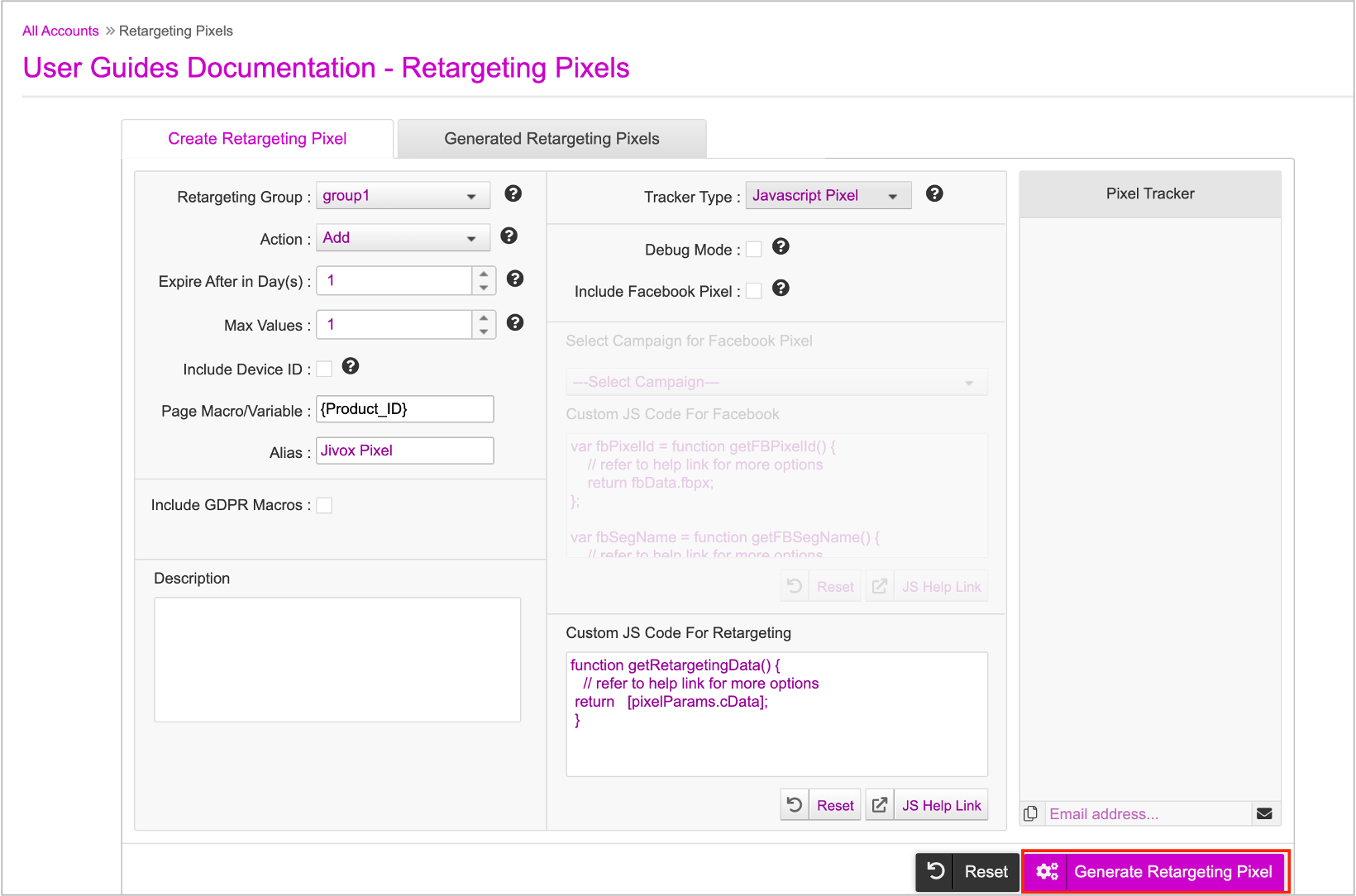
Next, you must select the Tracker Type from the drop-down. You will see the following two options:
- Image Pixel: Allows flexibility in collecting and sorting data. Data be passed through to pixel as a macro or as a variable accessible to the pixel
- Javascript Pixel: Can collect one data point to the tag. Sometimes, a publisher will not want to allow a Javascript pixel on the site for security reasons, so the image pixel is necessary
Let's Select Javascript Pixel.
Once you've entered all the details, click Generate Retargeting Pixel.
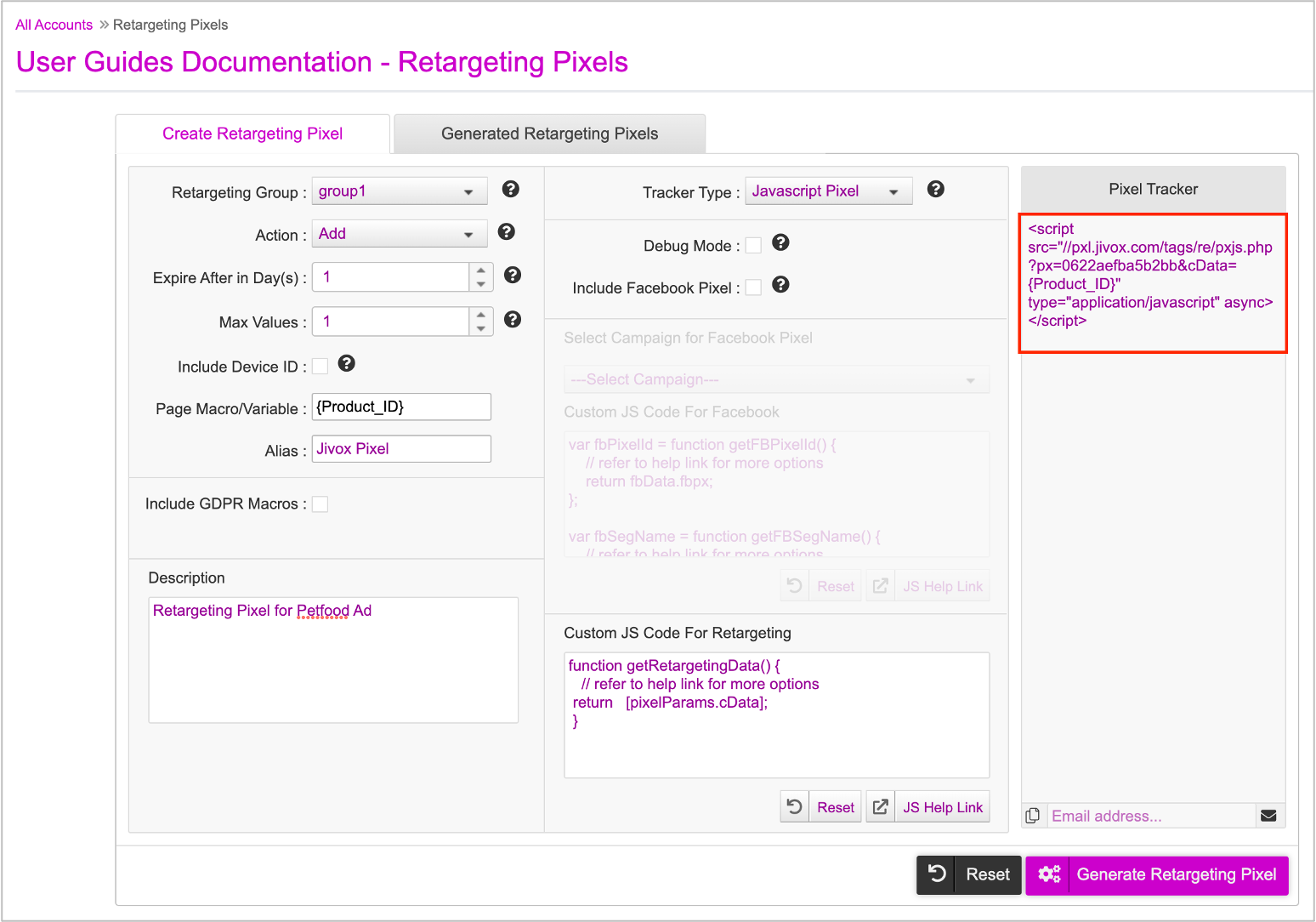
You will be able to see the generated script for the pixel in the Pixel Tracker column. You can add an email address here to send the details.
You can view the generated pixels by clicking the Generated Retargeting Pixels tab.

For more details on creating retargeting pixels, see Retargeting Pixels.
Now that we have generated the retargeting pixel, let's go ahead and set up the campaign.
On the left pane, click Campaigns to be retargeted to the Campaigns page.
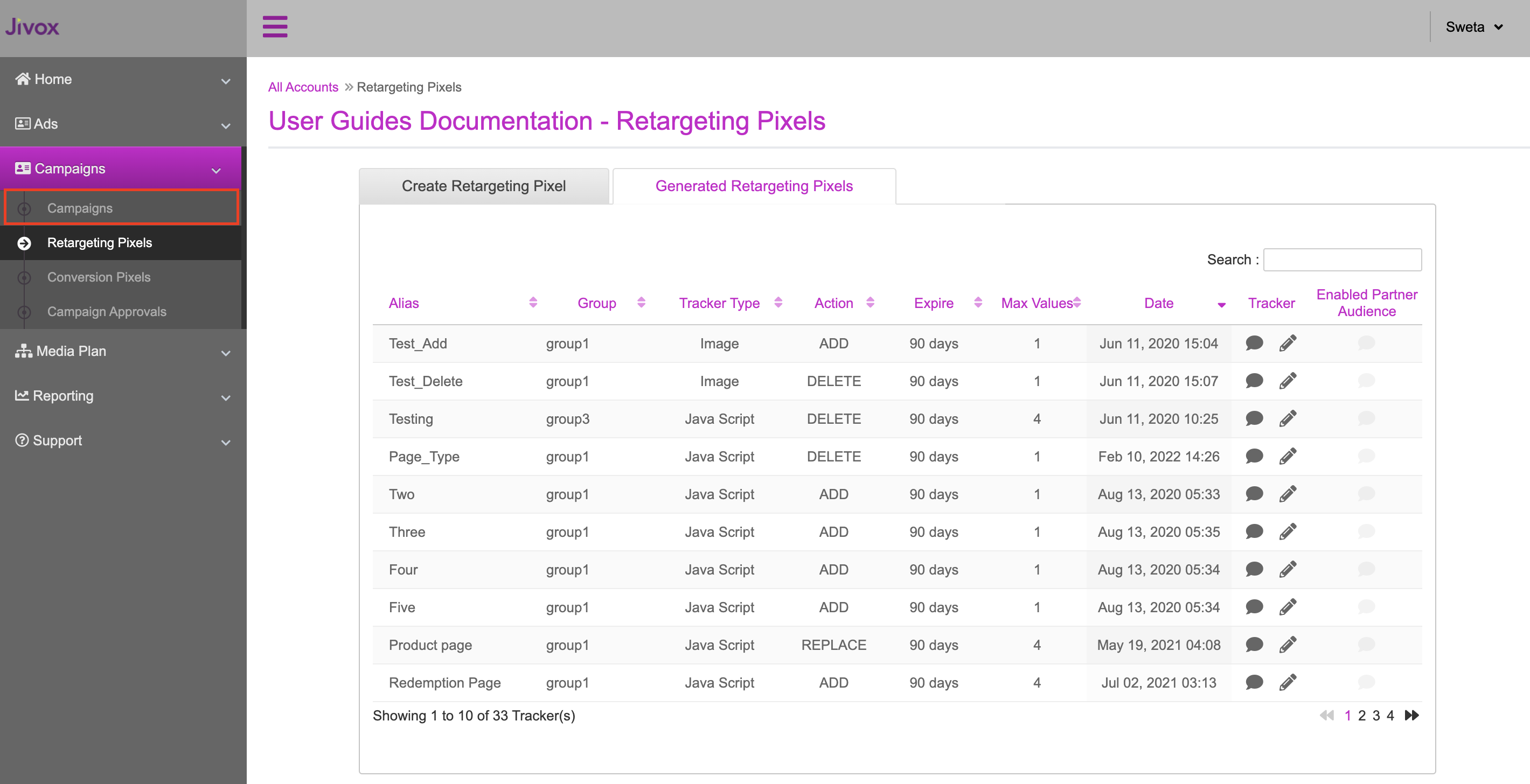
Setting Up Retargeting Campaign
On the Campaigns page, let's select Create New Campaign.
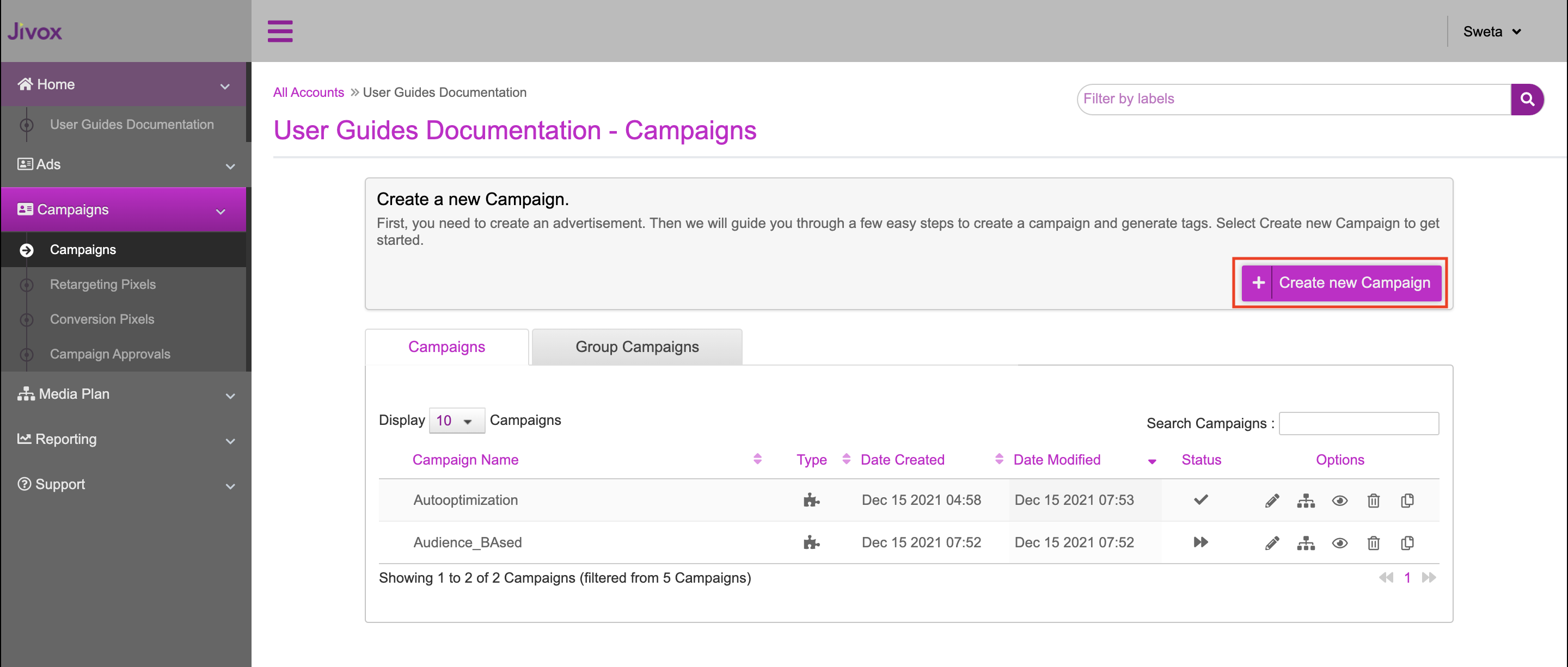
We'll be redirected to the Create Campaign page. The Manage Segments tab under Dynamic Campaign section is displayed. The Creative Master field is auto populated with the latest Ad that was created. Search and select the Ad that you want to work with. Here, we will select Retargeting New.
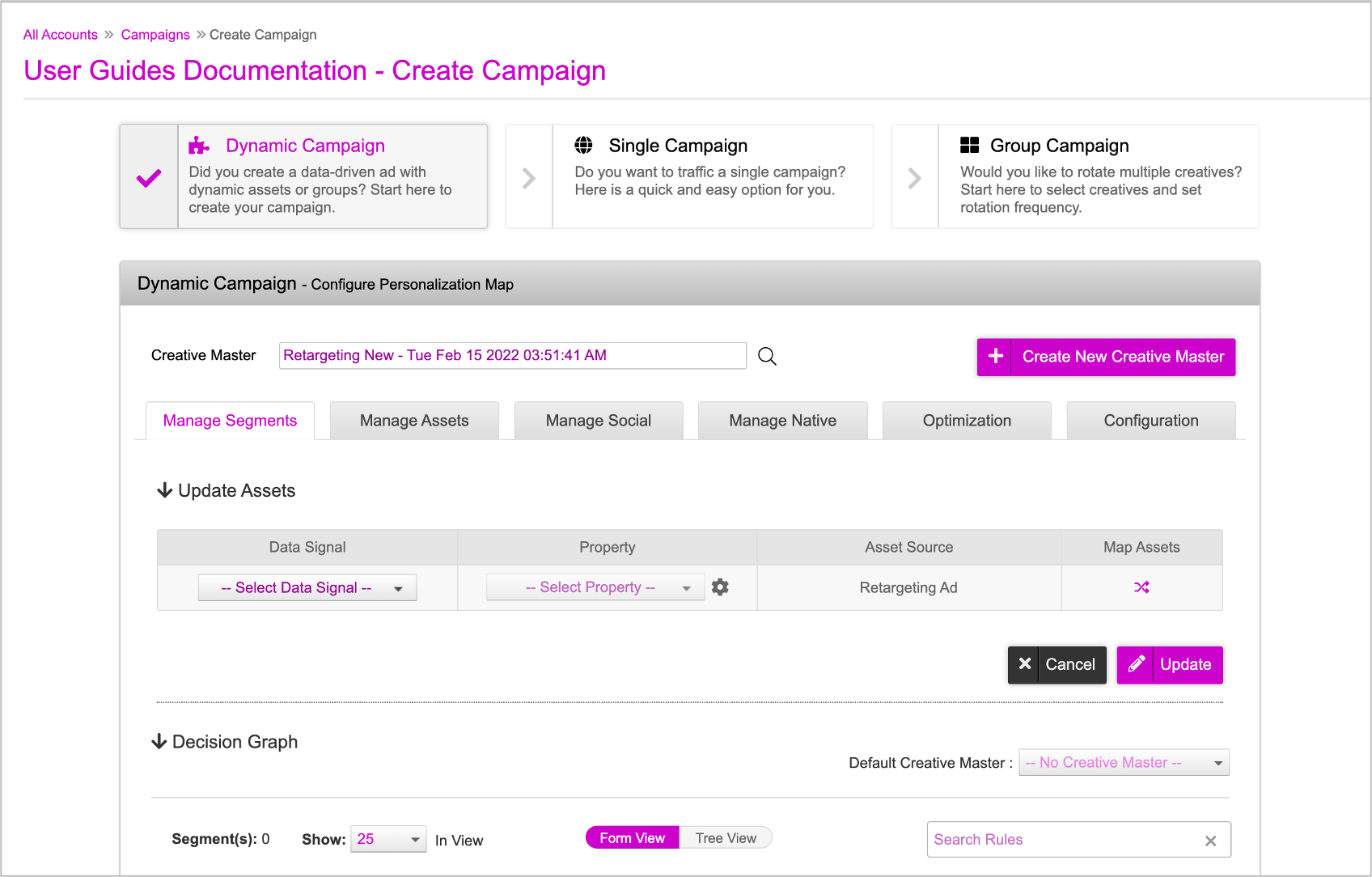
We'll use a Decision Map to set up this campaign.
1- In the Update Assets section under Manage Segments, select Sequential and Retargeting from the Data Signal drop-down.
2- Select Jivox Pixel (Group1) from Property. The Asset Source will be selected automatically.
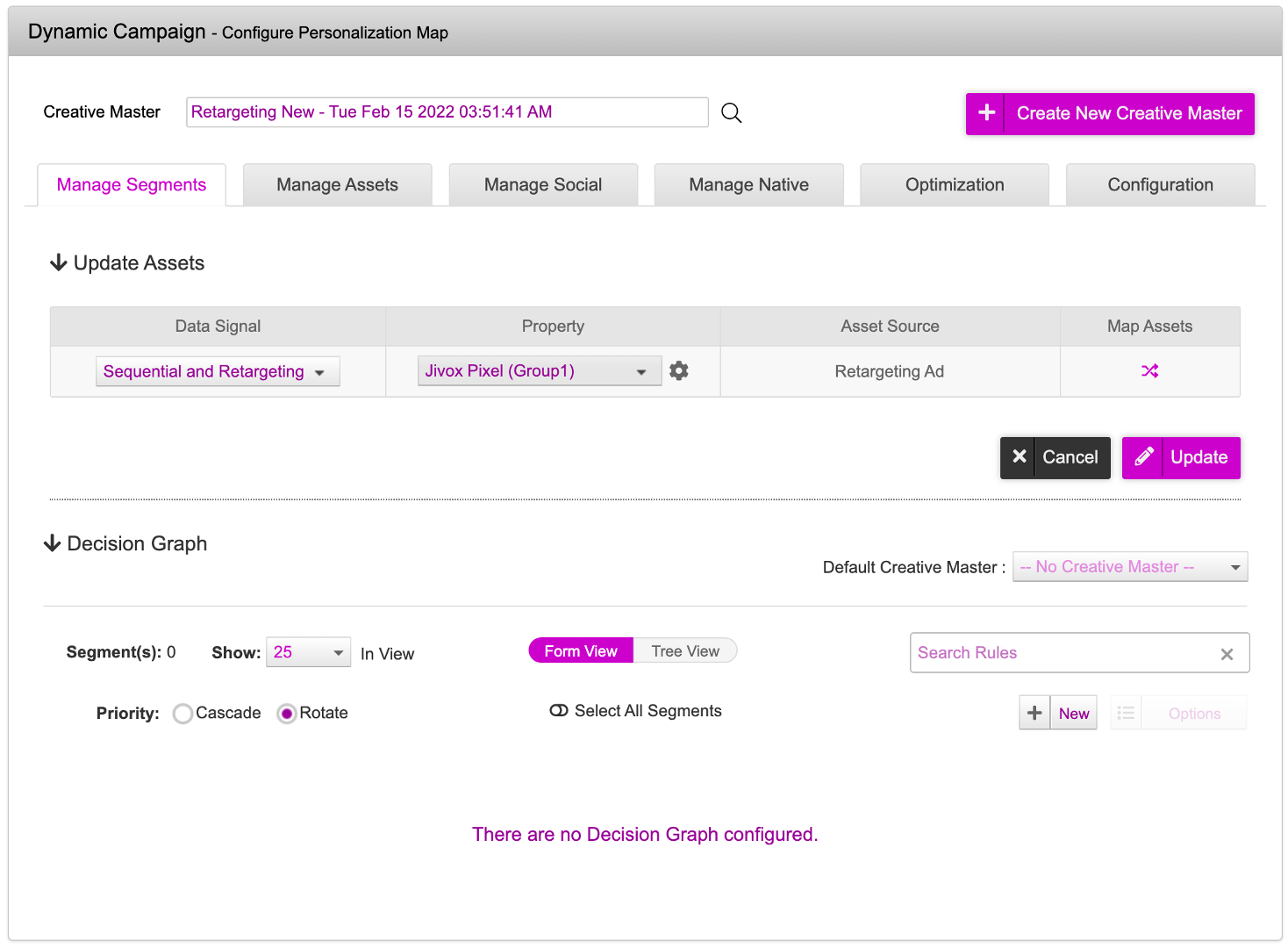
Next, let's view the asset mappings.
3- Click the icon in the Map Assets column to view the mappings.
Since we used DCS to create the Ad, the asset mapping process is completed in the ad section itself. You need not make any changes here.

If you still want to map more dynamic assets, select the dynamic asset from the drop-down, select the creative master and the column to which you want to map the assets and then click Add. You can add or delete mappings if required. Once you're done, click Save. |
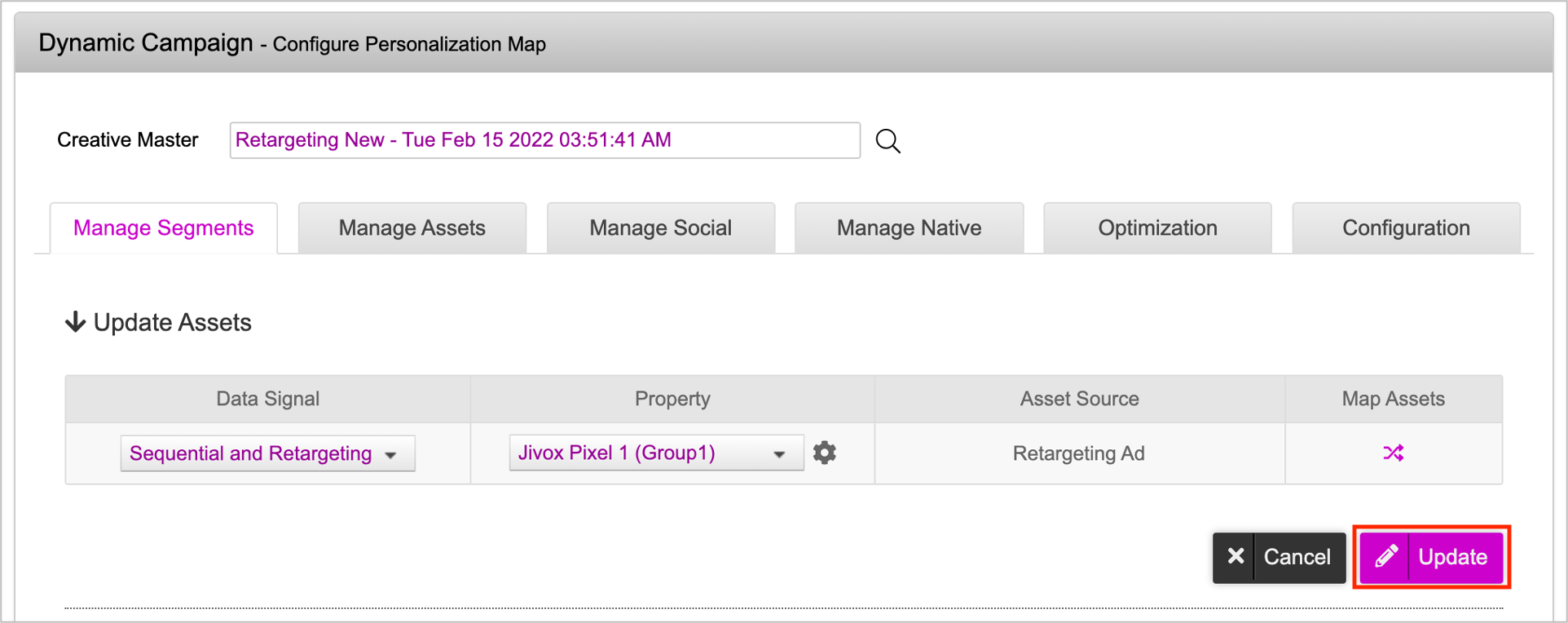
4- Click Update. The asset source and data signal mapping process is now complete and the Decision Map is configured.
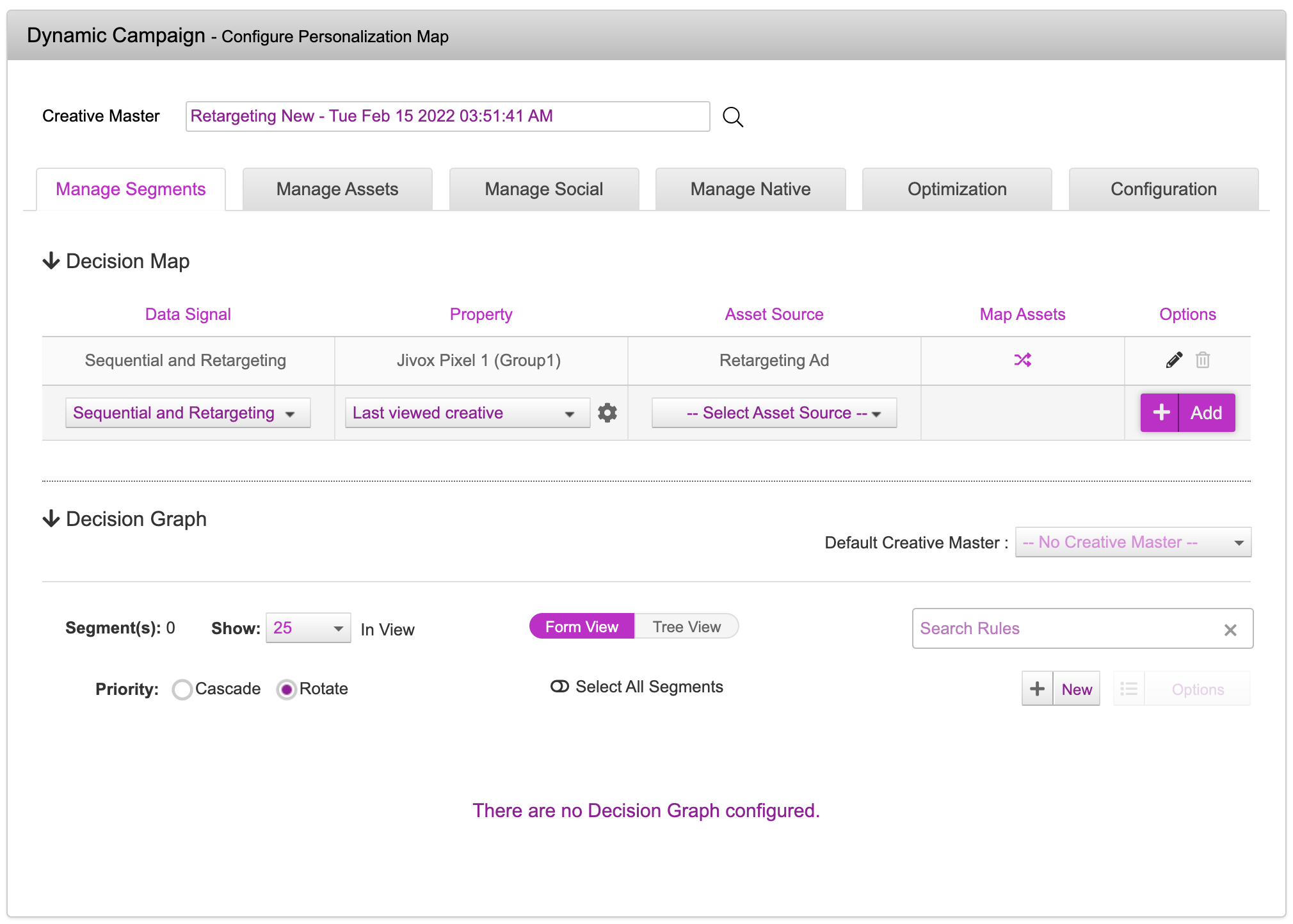
You can add additional data signals into the decision map using other asset sources if required. To do this, click the Add button.
5- Next scroll down to the bottom of the page . The campaign is named as per the selected Creative Master by default. If you wish to change it, you can enter a Campaign Name.
6- Enter a Campaign Description.

7- In the Click-Through URL field, enter the required URL and then click Save Campaign.
Now the campaign gets saved and you will be redirected to the Campaigns page.
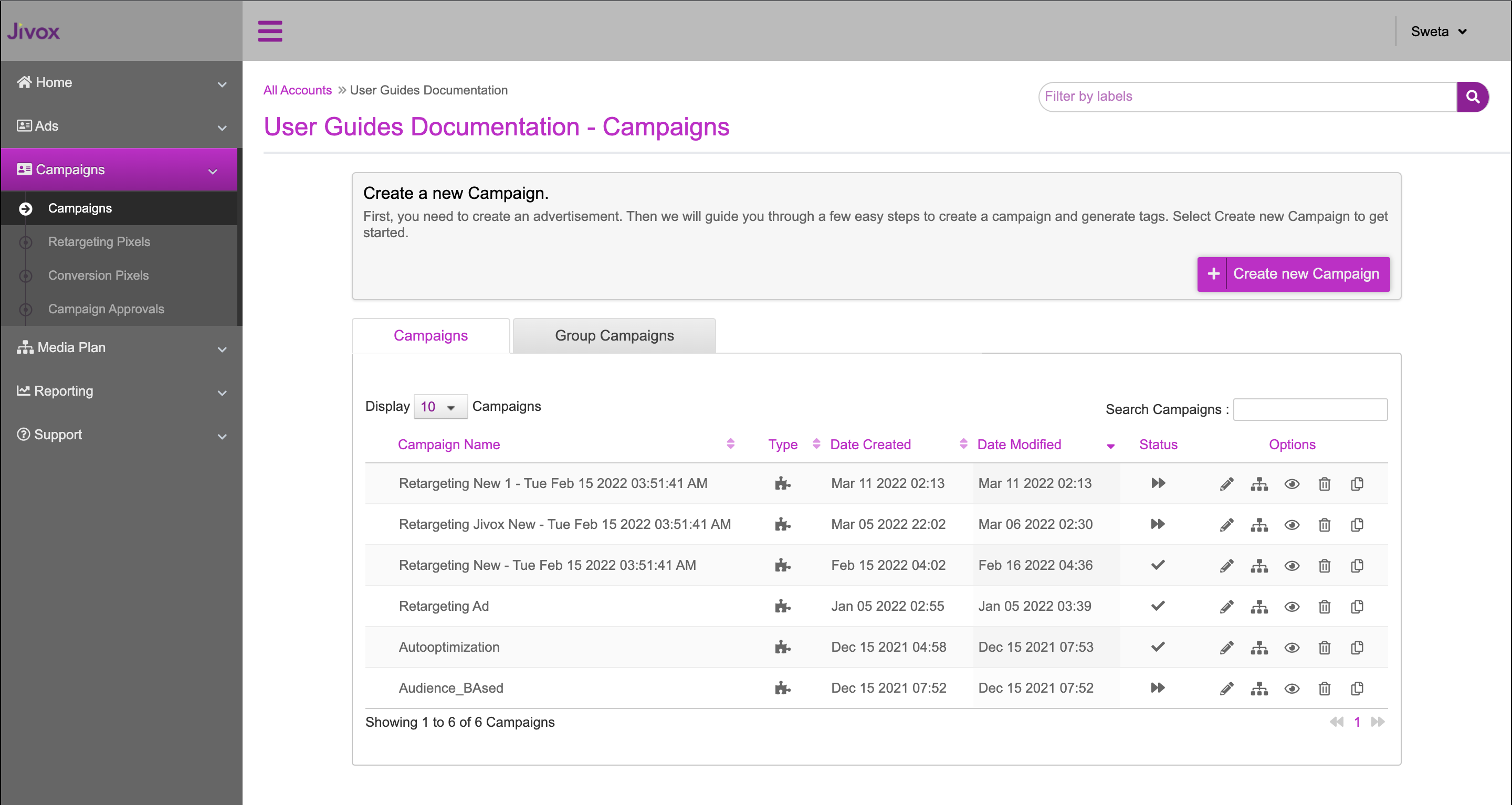
Next, let's go ahead and generate tags for the campaign. See Generating Tags.
Resources
| Item | Description |
|---|---|
| Creative Master | This is a 300x250 Creative Master |
| Assets | These are the image assets to go with it |
| Asset Source | This is the complete Asset Source to be imported |
| Mapping Document | This is the Mapping Document used in this campaign |
Next Steps
Here's what you must do next.
- Generate the Creative Preview and send it for approvals if required.
- Generate Tags
- Third Party Trackers
- Configuring Publisher and Placement
If you want to generate multiple tags at once, use the Bulk Tag Generation feature.